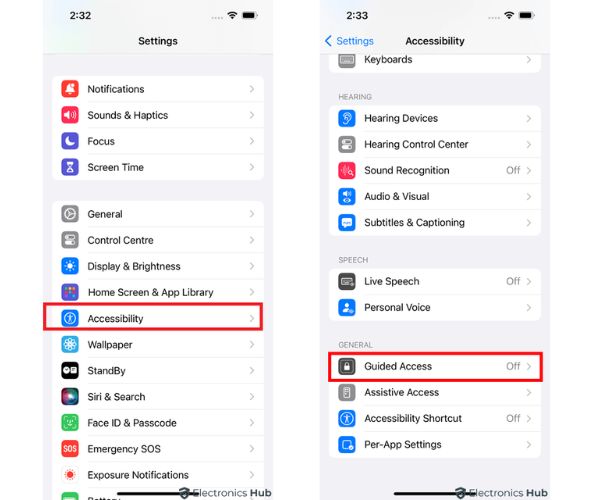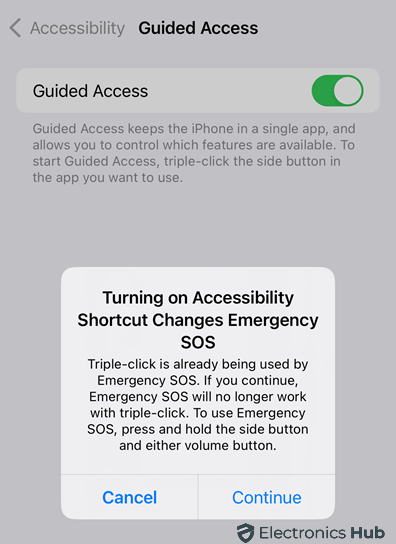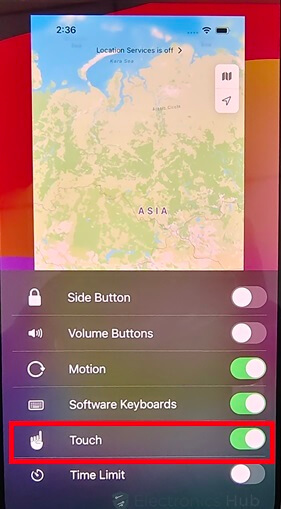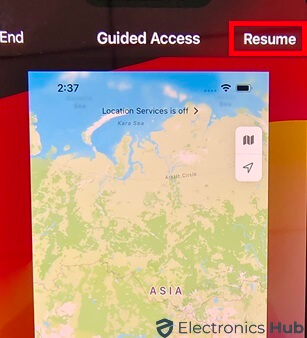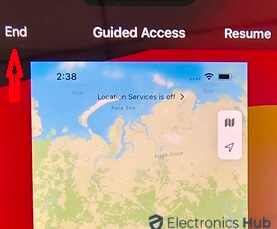Whether you’re flicking through cherished memories or sharing a snippet of your life captured in photos, the joy of sharing can quickly fade when friends or curious onlookers swipe through your phone without permission. Picture this: you’re at a gathering, passing your phone around to share some snapshots, only to find someone carelessly navigating through your entire gallery. It’s unnerving, isn’t it? But worry not, as there’s a smart solution to safeguard your privacy and maintain control over your screen. Enter the art of ‘freezing’ your phone screen—this isn’t just about securing your personal space; it’s about preserving the essence of your moments and shielding your privacy, even from the innocent curiosity of kids. So, if you’ve ever felt that discomfort or simply want to ensure your moments remain yours to share, let’s explore how to freeze the screen on both iPhone and Android devices to safeguard your privacy and maintain your digital boundaries.
Outline
ToggleWhy Do We Need to Freeze Phone Screen?
The need to freeze screens on our iPhone or Android devices revolves around crucial factors such as privacy protection and safeguarding against accidental interactions, especially concerning kids. While sharing photos is a common scenario, there are other instances where screen freezing becomes pivotal. Imagine sharing sensitive information or notifications in a face-to-face conversation with friends or colleagues.
In such moments, freezing the screen acts as a shield, preventing unintended access and safeguarding your privacy. Moreover, when it comes to curious kids exploring your device, freezing the screen acts as a barrier, ensuring they don’t inadvertently stumble upon private content or alter important settings. Thus, the primary reasons for freezing the phone screen boil down to preserving privacy and avoiding unintended interactions, particularly with children.
How to Freeze the Screen on an iPhone?
Freezing the screen on an iPhone can be achieved effortlessly through the device’s built-in feature called Guided Access. This function serves as a quick solution to maintain privacy and control over the screen during various interactions. Follow these simple steps to freeze your iPhone screen effectively:
- Access Settings: Begin by navigating to your iPhone’s Settings.
- Enable Guided Access: Scroll down and Select “Accessibility” and locate the “Guided Access” option. Toggle it on.
- Activate Guided Access: To activate Guided Access, triple-click the Home button. If you have a Face ID model, triple-click the Side button. Enter your passcode when prompted.
- Configure Settings: Once in Guided Access mode, you’ll see the Guided Access interface. Tap “Options” and turn off the “Touch” option.
- Freeze the Screen: After disabling “Touch,” tap on “Resume” to freeze the screen. Your display is now frozen and secure.
- Exiting Guided Access: To unfreeze the screen, triple-click the Home button again (or the Side button for Face ID models), enter your passcode, and tap “End” to exit Guided Access.
How to Freeze the Screen on Android?
For Android users seeking a screen freeze effect, as there’s no native feature, utilizing third-party software like Ninja Snap proves to be a viable option. Ninja Snap serves the purpose of preventing photos from being swiped and offers a clever way to deter intrusive browsing behavior.
- Utilize the Program: After Downloading the app, Open the Ninja Snap app and display the photos directly within the program. Alternatively, share the photo directly to Ninja Snap for viewing.
- Prevent Unauthorized Swiping: When someone attempts to swipe the screen while viewing photos within Ninja Snap, they’ll be met with a clever deterrent. Instead of scrolling through your images, the screen will display their own faces, captured by the front camera.
- Ensuring Privacy: By utilizing Ninja Snap, you not only protect your privacy but also subtly convey the message to refrain from rifling through your photos without permission.
Utilizing Ninja Snap offers a simple yet effective method to freeze the screen on your Android device, ensuring privacy and discouraging unwanted browsing.
Freeze Screen on iPhone – FAQs
Ans: No, freezing the screen using Guided Access is not permanent. It temporarily restricts touch functionality and locks the current screen, but it can be easily exit by following the steps to end Guided Access.
Ans: The duration of the screen freeze using Guided Access is not customizable. It remains in the frozen state until you actively exit Guided Access by triple-clicking the Home button (or the Side button for Face ID models).
Ans: No, freezing the screen momentarily to capture a screenshot does not significantly impact the battery life of the device. The feature is designed to be energy-efficient and does not consume excessive resources.
Ans: Yes, you can freeze the screen during video playback by using Guided Access, allowing a closer inspection of specific frames or scenes.
Conclusion
Whether sharing memories or guarding sensitive information, the ability to freeze your phone screen is crucial for both iPhone and Android users. While iPhones utilize the built-in Guided Access feature, Android devices benefit from third-party apps like Ninja Snap. Both methods effectively shield your privacy and maintain control over your screen, allowing you to share moments confidently and deter unwanted browsing, safeguarding your personal space and digital boundaries.

